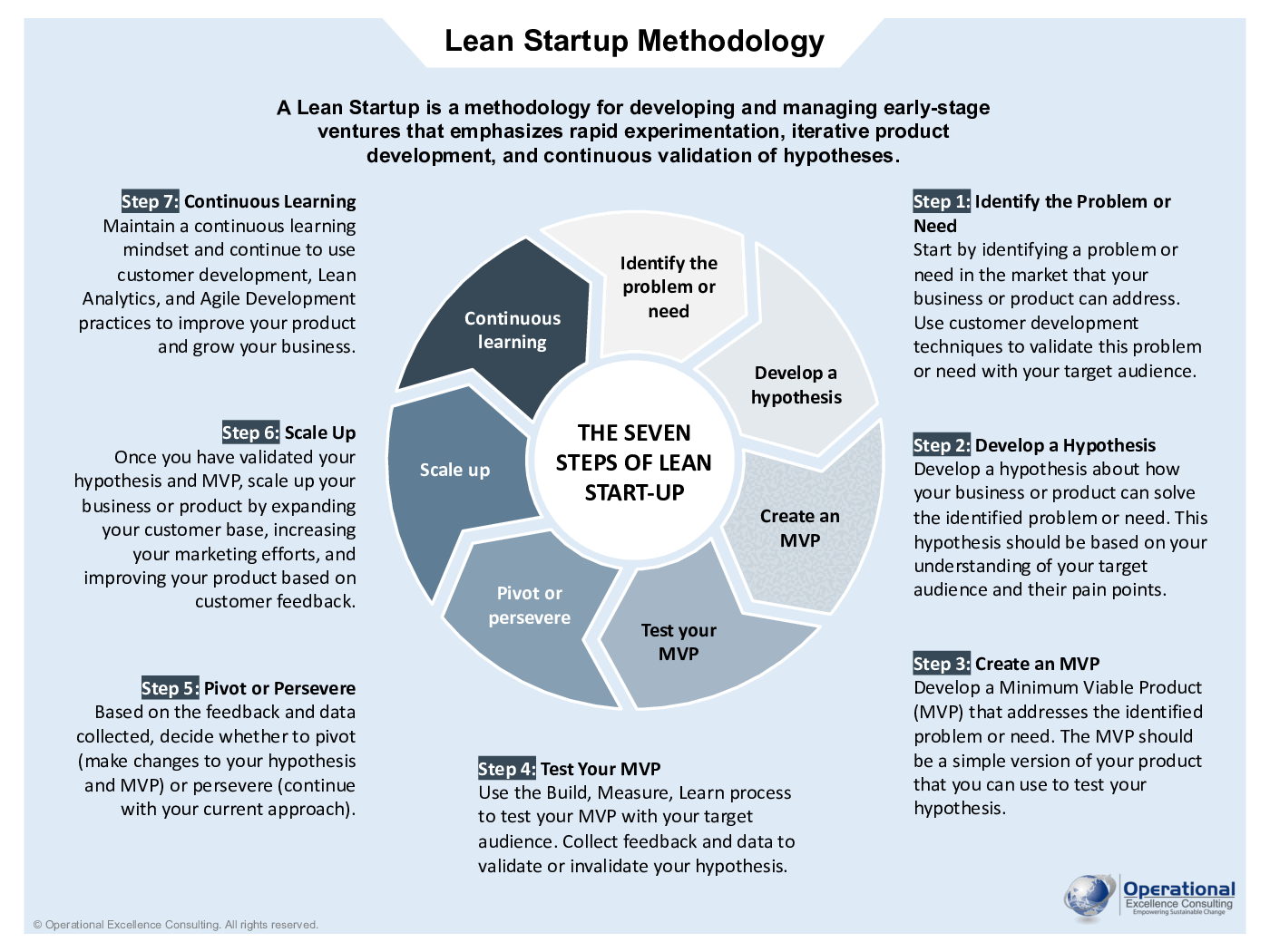Lean Startup Methodology Poster (PDF)
PDF document + PowerPoint (PPTX) 3 Pages
BENEFITS OF THIS PDF DOCUMENT
- Serves as a visual learning aid, making it easier for team members to understand the methodology's key principles.
- Displaying the poster in your workspace can promote team alignment and facilitate discussions among team members.
- Provides a continuous reminder of Lean Startup principles, encouraging consistent application within your organization.
LEAN STARTUP PDF DESCRIPTION
A Lean Startup is a methodology for developing and managing early-stage ventures that emphasizes rapid experimentation, iterative product development, and continuous validation of hypotheses. Coined by Eric Ries, this approach encourages entrepreneurs to build a Minimum Viable Product (MVP) to quickly test their business ideas in the market, gather real-world feedback, and adapt their strategies accordingly. The key principles of a Lean Startup include a relentless focus on customer needs, data-driven decision-making, and the willingness to pivot or persevere based on validated learning, ultimately aiming to maximize the chances of building a sustainable and successful business.
The Lean Startup poster is available in two distinct themes: a vibrant color scheme and a professional monochrome version. In both formats, the poster comes in a convenient PDF as well as an editable PPTX format, enabling effortless printing on A3/A4-sized paper from standard office copier machines. This versatile resource can be prominently displayed on employee workstations or distributed alongside your Lean Startup training materials.
Furthermore, the Lean Startup poster is an ideal supplement to Lean-related training presentations. It serves as a valuable takeaway, summarizing the core principles of Lean Startup reinforcing the key takeaways from your training.
The Seven Steps of Lean Startup include:
Step 1: Identify the Problem or Need
• Start by identifying a problem or need in the market that your business or product can address. Use customer development techniques to validate this problem or need with your target audience.
Step 2: Develop a Hypothesis
• Develop a hypothesis about how your business or product can solve the identified problem or need. This hypothesis should be based on your understanding of your target audience and their pain points.
Step 3: Create an MVP
• Develop a Minimum Viable Product (MVP) that addresses the identified problem or need. The MVP should be a simple version of your product that you can use to test your hypothesis.
Step 4: Test Your MVP
• Use the Build, Measure, Learn process to test your MVP with your target audience. Collect feedback and data to validate or invalidate your hypothesis.
Step 5: Pivot or Persevere
• Based on the feedback and data collected, decide whether to pivot (make changes to your hypothesis and MVP) or persevere (continue with your current approach).
Step 6: Scale Up
• Once you have validated your hypothesis and MVP, scale up your business or product by expanding your customer base, increasing your marketing efforts, and improving your product based on customer feedback.
Step 7: Continuous Learning
• Maintain a continuous learning mindset and continue to use customer development, Lean Analytics, and Agile Development practices to improve your product and grow your business.
Got a question about the product? Email us at support@flevy.com or ask the author directly by using the "Ask the Author a Question" form. If you cannot view the preview above this document description, go here to view the large preview instead.
Source: Best Practices in Lean Startup PDF: Lean Startup Methodology Poster PDF (PDF) Document, Operational Excellence Consulting



